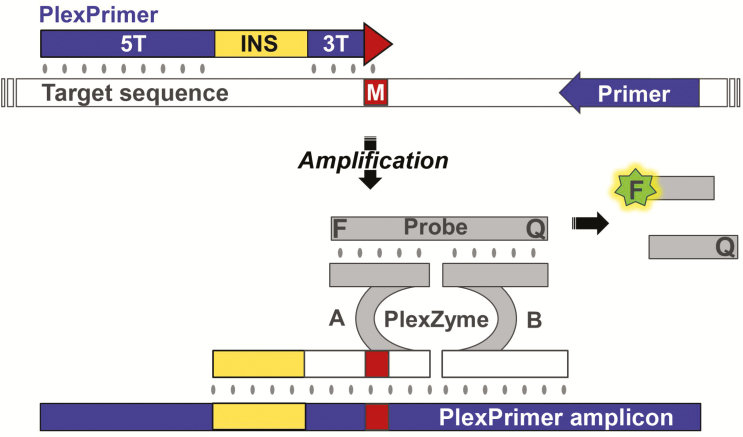Figure 1.
PlexPrimers are combined with PlexZymes for mutation-specific amplification and detection with quantitative polymerase chain reaction (qPCR). The PlexPrimer contains 3 sections; a long 5’ target-recognition sequence (5T), a short 3’ target-specific region (3T) matched to the mutation sequence (M) and an intervening insert sequence (INS), which does not bind to the target rather increases the specificity of the 3T region for the mutant over the wild type sequence. During amplification, the INS is incorporated into the PlexPrimer amplicons, and these can be detected in real time using PlexZymes, nucleic acid enzymes that form, from their component partzymes (A and B), only when matched PlexPrimer amplicons are present. Each partzyme contains a probe-binding arm, a partial catalytic core, and a target-binding arm, oriented such that partzyme A binds to the amplicon in the region containing the INS, and partzyme B binds adjacently downstream. Catalytically active PlexZymes bind and cleave reporter probes separating a fluorophore (F) and quencher (Q), resulting in signal generation.

